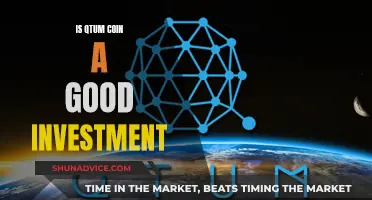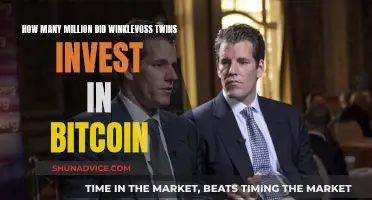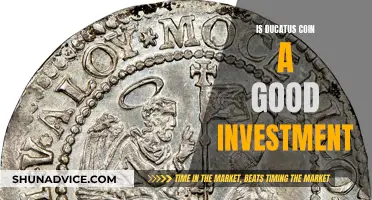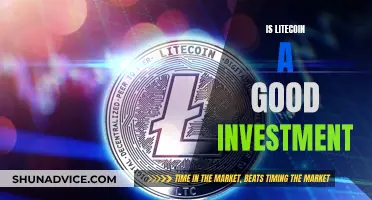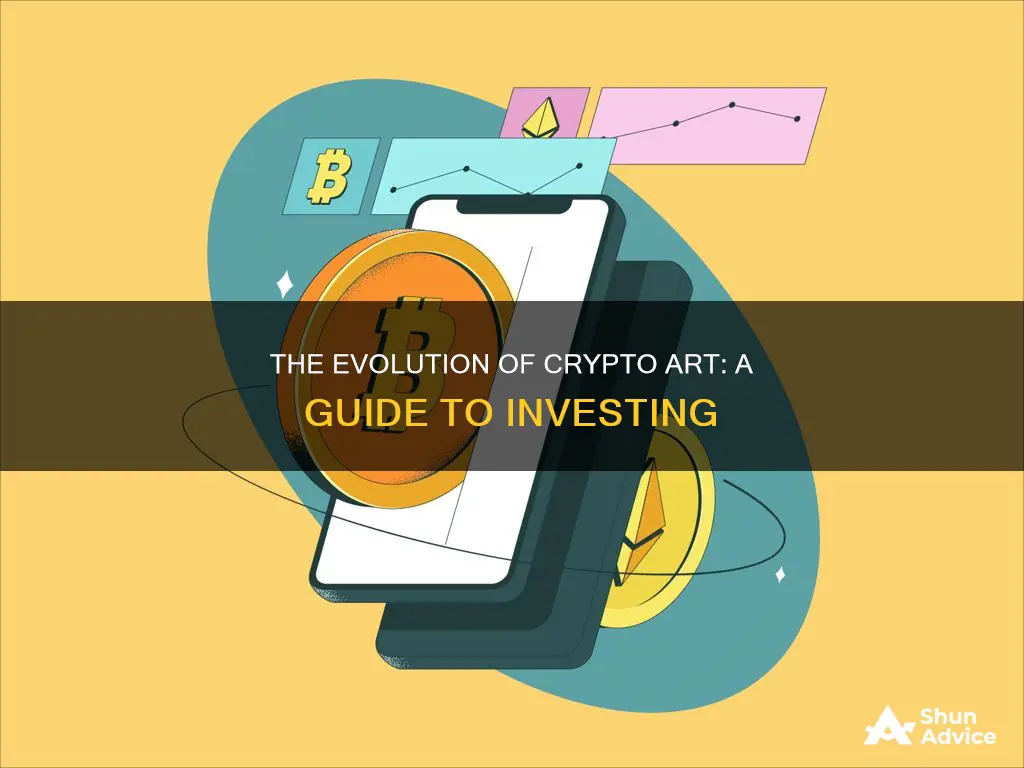
Crypto art, also known as NFT art, is an emerging market that has attracted interest from companies, auction houses, artists, celebrities, collectors, and investors. NFT stands for non-fungible token, and each NFT has a unique digital signature that prevents it from being exchanged for another NFT. NFTs are typically created on blockchain networks like Ethereum and Solana. Crypto art can take various forms, including photographs, digital paintings, videos, musical compositions, and even video games. The value of crypto art is subjective and influenced by factors such as the artist's reputation, the scarcity of their work, and demand from collectors. While some critics view crypto art as a speculative bubble, others argue that it democratizes access to art ownership and provides a platform for artists to monetize their creations.
| Characteristics | Values |
|---|---|
| Definition | Non-fungible tokens (NFTs) |
| Use | Used to guarantee ownership of an asset |
| Art Types | Photographs, digital media, videos, musical compositions, writing, video games |
| Marketplaces | OpenSea, Rarible, Foundation, Nifty Gateway, SuperRare |
| Blockchain Networks | Ethereum, Solana |
| Artists | Beeple, Pak, Damien Hirst, Trevor Jones, Mario Klingemann, Jason Bailey |
| Value | Highly speculative, driven by demand and subject to volatility |
| Benefits | Accessibility, elimination of intermediaries, direct connection with artists, lower barriers to entry |
| Risks | Environmental impact, speculative nature, potential loss of investment |
What You'll Learn

Understand the traditional art market
The traditional art market has been largely the domain of the super-wealthy, with the first art market focusing on contemporary art and the artists themselves setting the initial value of their work. This value is influenced by a number of factors, including the artist's exhibition history, their sales track record, their training and career level, demand from collectors, the market economy, and the size of and materials used in the artwork.
The primary art market is where an artwork sees its first sale, often through a gallery that showcases the work or represents the artist directly. Buyers in this market have the opportunity to interact directly with the artist or gallery, fostering a personal connection and a deeper understanding of the artwork's context and inspiration. Key players in this market are emerging artists, established galleries, and art collectors.
The secondary art market includes all transactions after the first sale, with the artist no longer directly involved. The price of an artwork in this market is influenced by the artist's reputation, previous auction prices, exhibitions in prestigious places, and whether the work has been honoured by a museum or artistic institution. Galleries, auction houses, and private sales are typical sources for these sales.
The global art market demonstrated remarkable resilience in 2022, generating nearly $68 billion. The United States led the market, contributing to 80% of total sales value, followed by the United Kingdom and China. Online sales, constituting approximately 16% of the total market value, also played a pivotal role.
The art market has evolved over time, with the development of collectors, the production of movable works of art, and the emergence of intermediaries such as dealers and auctioneers playing a crucial role. Auctions, which were rare before the 17th century, are now major determinants of art values. The expansion of the market through cultural globalisation, satellite communication, and the Internet has further contributed to its growth.
The Fundamentals of Investing in Bitcoin
You may want to see also

Research the NFT market
Non-fungible tokens (NFTs) are a unique type of digital asset stored on a blockchain that verifies ownership and authenticity. The NFT market is growing rapidly, with a compound annual growth rate (CAGR) of 34.2% to 34.5% expected from 2024 to 2030. As of February 2022, the total global capitalisation of cryptocurrency is USD 1.76 trillion, making it the world's 8th largest economy.
NFT Market Structure
The NFT market can be segmented by type, application, end-use, and region.
Type
- Physical Asset
- Digital Asset
Application
- Collectibles
- Art
- Gaming
- Utilities
- Metaverse
- Sport
- Others
End-Use
- Personal
- Commercial
Region
- North America
- Europe
- Asia Pacific
- Latin America
- Middle East & Africa
NFT Market Trends
NFTs are revolutionising the way the art market operates, and new investment platforms are emerging to help collectors navigate this digital world. The value of the digital art market grew by 299% in 2020, and the audience for NFTs is growing.
NFT Market Drivers
- Improvements in the gaming industry: The digitisation of games has been a boon to the market, allowing players to purchase exclusive items and join communities.
- Increasing involvement of performers: Content creators, celebrities, artists, and musicians can sell their workpieces and earn more money from the comfort of their homes.
- Metaverse: The metaverse is a new three-dimensional digital realm that employs virtual reality and other technologies to provide individuals with lifelike experiences online. NFT is predicted to be a significant model for income generation in the metaverse.
NFT Market Restraints and Challenges
- Copyright fraud: Duplication of original works can cause significant losses to creators, demotivating them.
- High initial costs: The constant fluctuation in cryptocurrency values can make investing in NFTs expensive and risky.
- Technological complexity: The technology behind NFTs can be complicated to understand, leading to mistakes and wrong investments.
- Environmental impact: Blockchain technology, such as Ethereum, is known to consume a vast amount of energy, leading to an increased carbon footprint.
NFT Market Opportunities
The NFT market has immense potential for future applications, especially with emerging technologies and updates in blockchain. Additionally, the integration of smart contracts with NFTs can help overcome identity and privacy risks associated with metaverse or Web3 spaces.
Big Eyes Coin: A Smart Investment Move?
You may want to see also

Know the risks
Crypto art is a risky investment, and it's important to be aware of the potential dangers before getting involved. Here are some key risks to consider:
Volatility and High Risk
Crypto art, like other cryptocurrencies, is highly volatile and a substantial risk. The value of a piece of crypto art is subjective and influenced by various intangible factors, such as the artist's reputation, the scarcity of their work, and its uniqueness. As a result, you could face huge losses if the market takes a downturn. It's generally recommended that you only invest what you can afford to lose.
Scams and Influencers
Crypto scammers are adept at convincing people to buy their digital assets. Be cautious of "finfluencers" on social media who are paid by crypto companies regardless of whether their followers lose or gain money. Crypto scams often target minority investors, particularly young people, with promises of high returns and removing barriers like credit checks. If something sounds too good to be true, it probably is.
Counterfeits and Destruction
As the crypto art market is largely unregulated, there is a risk of counterfeits and forgeries. It can be challenging to verify the authenticity of a digital artwork, and the potential for destruction or loss of your investment is always present, whether through a technical glitch or a natural disaster.
Tax Implications and Lack of Income
Investing in crypto art does not generate income or dividends. You will not receive any monetary returns until you sell the piece, and even then, you may be subject to a hefty capital gains tax of 28% if the art has appreciated in value.
Market Performance
While some claim that collectibles and crypto art are not tied to the performance of the stock market, there is a degree of correlation. When the stock market does well, investors have more disposable income, which can lead to an increase in crypto art purchases. However, when the market falls, disposable income drops, negatively impacting the crypto art market.
Regulatory Uncertainty
The world of crypto art is still relatively new and largely unregulated. The lack of government oversight means that your investment is not protected or insured in the same way that traditional investments are. The regulatory landscape could also change, potentially impacting your investment.
In conclusion, investing in crypto art can be a risky proposition. It's essential to do your research, understand the potential risks, and only invest what you can afford to lose.
NYSE Bitcoin Trading: A Beginner's Guide
You may want to see also

Choose a reliable platform
As with any investment, it is important to do your research and choose a reliable platform when investing in crypto art. Not all platforms are created equal, and some may be more reputable and secure than others. Here are some factors to consider when selecting a platform:
- Security and reliability: Look for a platform that prioritises security and has a good track record. Check reviews and testimonials from other users to get an idea of their experience with the platform's security measures.
- Transparency: A good platform should provide transparent information about trade data, transaction history and pricing. This transparency can help you make more informed investment decisions and assess the legitimacy of the platform.
- User-friendliness: Choose a platform with a user-friendly interface that is easy to navigate and understand. This is especially important if you are new to crypto art investing. Look for platforms with intuitive features, clear instructions and helpful customer support.
- Range of artworks: Consider the variety and quality of crypto artworks offered on the platform. A wider selection of artworks can provide more opportunities to find pieces that align with your interests and investment goals.
- Artist verification: Ensure that the platform verifies the artists and their artworks to minimise the risk of fraud or plagiarism. Look for platforms that have strict guidelines and authentication processes in place to protect both artists and investors.
- Fees and charges: Be mindful of the fees associated with using the platform, such as transaction fees, minting fees or membership fees. Compare the fee structures of different platforms to find the most cost-effective option for your investment strategy.
- Reputation and community: Research the reputation of the platform within the crypto art community. Look for platforms that are well-established, widely recognised and trusted by artists, collectors and investors. A strong community can also provide support, resources and insights that could be beneficial for your investment journey.
Some popular and well-known platforms for crypto art include OpenSea, Rarible, Foundation, Nifty Gateway, SuperRare and Christie's. Remember to always do your due diligence before committing to any investment platform.
Tether Coin Investment: A Beginner's Guide to Getting Started
You may want to see also

Set up a crypto wallet
Setting up a crypto wallet is a straightforward process that can be completed in a few minutes. There are several types of crypto wallets available, each with its own unique features and security protocols. Here are the steps to set up a crypto wallet:
Choose the Right Crypto Wallet for You
There are three basic types of crypto wallets: software wallets, cold wallets, and custodial wallets. Software wallets, also known as hot wallets, store your crypto on an internet-connected device that you own. Cold wallets, on the other hand, are specialized hardware devices that keep your crypto offline, offering added security. Custodial wallets leave your crypto in the control of a trusted company, such as a crypto exchange, and are another option for secure storage.
Sign Up for an Account and Download the Software or Buy the Device
If you choose a software wallet, you will need to select a reliable wallet provider and download the wallet app to your phone or computer. Popular options include Exodus, Electrum, and Trust Wallet. For a hardware wallet, you will need to purchase the device directly from the company or a trusted retailer. Some popular hardware wallets include Ledger and Trezor.
Set Up Your Security Features
Once you have downloaded the software or purchased the hardware wallet, it is crucial to set up your security features. This includes creating a secure password, enabling two-factor authentication, and writing down your recovery or "seed" phrase. The recovery phrase is typically a random 12-word or 24-word phrase that corresponds to your private key. Keep this phrase in a safe place, as it will be needed if you ever lose your login credentials or want to access your funds on another device.
Purchase or Transfer Cryptocurrency to Your Wallet
The final step is to add cryptocurrency to your wallet. You can do this by purchasing crypto directly through the wallet app or platform, or by transferring coins from another wallet or exchange. Make sure to follow the instructions provided by your chosen wallet provider to ensure a smooth and secure transaction.
Altcoin Investment Strategies: Tips for Beginners
You may want to see also
Frequently asked questions
Crypto art, or NFT art, is a digital artwork whose ownership is recorded on a blockchain. The blockchain records transactions and gives buyers proof of authenticity and provenance.
To start investing in crypto art, you will need to obtain a crypto wallet that allows you to store non-fungible tokens (NFTs) and cryptocurrencies. You will also need to buy some cryptocurrency, usually Ether (ETH), to make purchases.
As with any investment, there are risks associated with investing in crypto art. The market is highly speculative, and the value of a piece of crypto art is subjective and determined by various intangible factors such as the reputation of the artist and the demand for their work. There have also been cases of people selling other people's art as their own and the theft of wallets containing NFTs and cryptocurrency.
Some popular NFT marketplaces include OpenSea, Rarible, Foundation, Nifty Gateway, and SuperRare.


